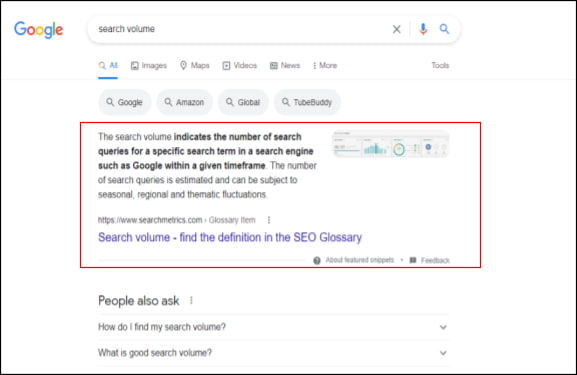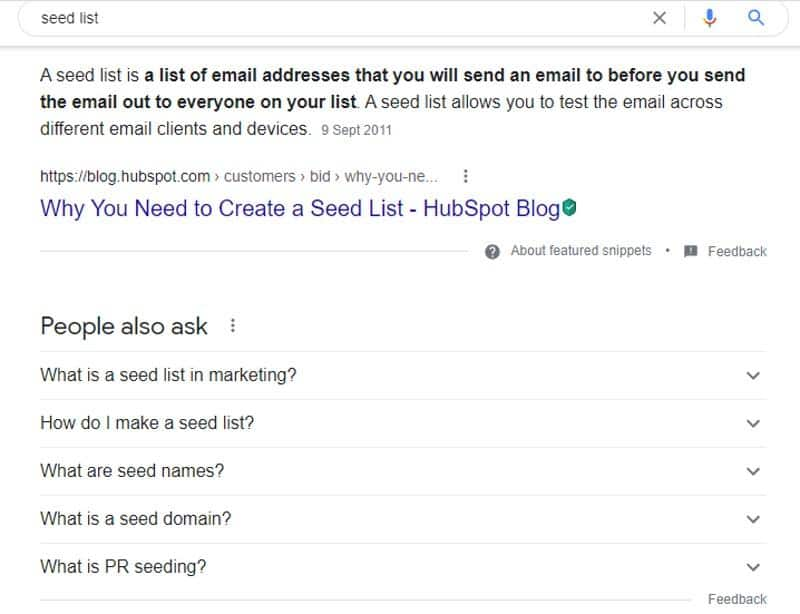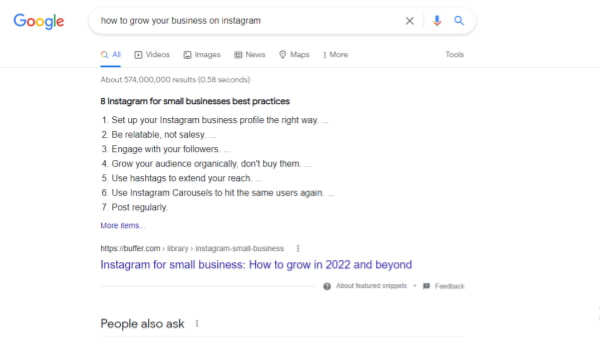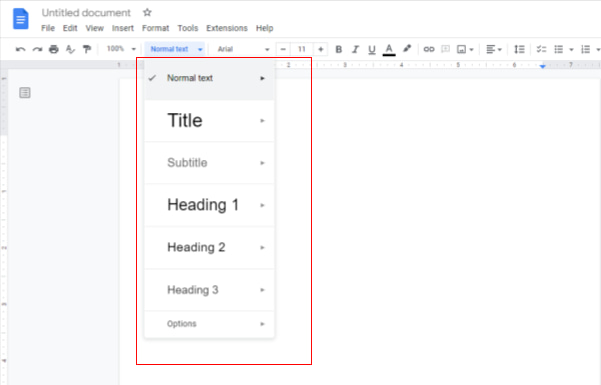How to Rank In Googles Featured Snippets Results
Google is constantly developing new features that ensure better user experiences. One of these features is the Google featured snippets, which appear first in the search engine results pages (SERPs). The featured snippets’ position is often referred to as position zero.
The Google featured snippets are pulled from website pages on Google and displayed differently depending on the search query. They can either be in the form of a definition box, table, unordered bulleted list, ordered numbered list, or video content.
Featured snippets make it easy for users to get answers to their questions without or before clicking on the link. For instance, if you Google “search volume,” the first search result is a definition box. So you can easily read through and get some answers to that search query without having to click through to the website hosting the information.

The feature has proven valuable for content marketers looking to boost their conversion rates and drive more organic traffic to their sites. Statistics show that featured snippets account for 35.1% of all clicks.
If you want your content featured on Google snippets, read on to learn how to achieve it in a few steps.
- Discover competitors featured snippets
- Find snippet opportunities using Google
- Use long-tail keywords and questions in headings
- Recognize the search intent
- Organize your content
- Stay within optimal word count limits
Discover competitors featured snippets
Spying on your competitors is one of the easiest ways to identify Google featured snippets opportunities. By finding the existing featured snippets, you can also identify keywords to target to steal those featured snippets from the competition.
You can use a keyword research tool like SEMrush and Ahrefs to find the Google featured snippets your competitors are ranking for and the focus keyword phrase.
Discovering competitors’ featured snippets also allows you to see the content structure they’re using for that specific piece of content. That shows you the type of structure Google is looking for to bump up your content to a featured snippet for that particular search query. You can then use that to format your content similarly to increase the chances of stealing that featured snippet.
For instance, in the featured snippet below, you can see that Google prefers step-by-step content for the search query. With this information, you can create a similar piece of content, ensuring that the tips are in a numbered list. You would also want to utilize H2 or H3 headings for each point.
You can also look at other details like backlinks, readability scores, and the article’s word count. Let those insights guide your content creation process for that article. But remember to use a content paraphrasing tool to ensure you don’t plagiarize your competitors’ work.
Find snippet opportunities using Google
You can also find featured snippet opportunities from Google. Start by identifying a specific keyword or content topic. Then, run a Google search to see if there are featured snippets for those keywords. That’s a more manual process. However, it can help you find snippet opportunities that you may have missed during the competitive analysis.
You can also check other sections on the Google SERPs like the “people also ask” and the “related searches” sections. These will guide you on the keywords and content ideas you should use to ensure your content makes it to a featured snippet.
For example, in the image below, we can see that the search query “seed list” has a featured snippet. That means writing a good seed list definition while utilizing NLP could help you get the snippet. Besides that, the “people also ask” section shows other related queries with more featured snippet opportunities.
A high ranking increases the chances of your content getting featured in the snippets. Statistics show that at least 99% of featured snippets already rank on the first Google SERPs. With high-quality content, you can achieve these top-ranking search results.
Since engagement may help your SEO ranking, use email marketing to reach more people who might be interested in your piece. Make sure you use form builders to create sign-up forms on your site that will help you build and grow your email list. Notify your subscribers through email every time you have a new blog post. In your email, you may include a link they can click to access that blog post on your website.
Use long-tail keywords and questions in headings
Thanks to features like Google voice search, search queries are becoming specific, longer, and conversational. These queries form targeted keywords that tend to be long-tail keywords or question formats.
Including the most asked questions on your headings and providing a quick and straightforward answer will lead to more readership and search volume. That proves your content’s value to Google, increasing the probability of landing a Google featured snippet.
Long-tail keywords are made of longer but more specific and targeted terms than other categories of keywords. So, for instance, instead of just targeting content marketing in your headings, you can target “what is content marketing” or “what does content marketing involve.” The latter will drive more traffic with qualified leads, putting you in a better position for a featured snippet.
Recognize the search intent
Search intent is simply understanding what an online user is looking for through their search query. For example, if the search query is “how to grow your business on Instagram,” you need to understand that the person is looking for a step-by-step guide. Then provide that information in simple steps.
There are four primary categories of search intent::
- Informational – These users are looking for information. An example of the query would be, “what is online reputation management?”
- Transactional– These users are looking to make a purchase. A query example is “best online reputation management company.”
- Navigational– This group of users is looking for a specific page or brand related to the product/service they want. For instance, they could search “Reputation X online reputation management company.”
- Commercial investigation– The users are looking for a specific product or service, but they are still weighing options and are probably looking for reviews and ratings. Their query could be “Reputation X reviews.”
You need to understand the search intent behind every query, then create high-quality content that satisfies that intent fully. For example, if you’re targeting the informational query “what is online reputation management,” you’ll want to create an article providing every little detail the reader needs.
Creating valuable content that satisfies search intent increases your chances of getting the featured snippet for that particular search query.
Organize your content
Google appreciates well-structured content. Proper formatting makes it easier for search crawlers to crawl your content. It also makes for a great user experience.
Using headings correctly is crucial. Break down your content using H1, H2, and H3s. You can also use H4s where necessary but maintain simplicity. Alternatively, you can replace the H4s with bullet points or bold.
Remember, you can also add phrases and tags to the headline phrases or your content to help clarify the type of featured snippets you want. For instance, If your content outlines a step-by-step process, you can indicate numbers in the headings in chronological order. For the description box, just add a paragraph <p> tag.
Stay within optimal word count limits
Google featured snippets are designed to answer users’ queries as quickly and simply as possible. Unfortunately, Google does not provide word limits. Still, SEO experts recommend different words and character counts for different types of featured snippet content.
- For instance, an A.J. Ghergich and SEMRush study showed that the optimal word count limit for a featured snippet paragraph is 40-50 words, an equivalent of 300-320 characters.
- A different study by Portent shows that word limits are slightly different for other formats. For instance, listed featured snippets range between 5-8 points. The most common word count is 40-45.
- The same study reports that most tabular snippets have 25 characters or less in each table cell and a maximum number of five rows and three columns.
The optimal word count will ultimately depend on the specific type of featured snippet displayed for your target search query. To get a better estimation, look at the character or word count of the existing featured snippet and ensure yours stays within that range.
In closing
Ranking in the Google featured snippets has benefits for your site. It increases brand exposure and boosts traffic considerably. As discussed above, the best way to have a featured snippet is by producing quality content that Google will love.
You also need to discover your competition’s featured snippets. See search queries and how the competitor has optimized their content. Use long-tail keywords and questions in the headings.
Moreover, recognize users’ search intent for each query and create content that aligns with that intent. Finally, organize your content and stick to optimal word count limits.
Follow these pointers, and secure a featured snippet position.
Tags: Business Reputation Marketing, SEO.




